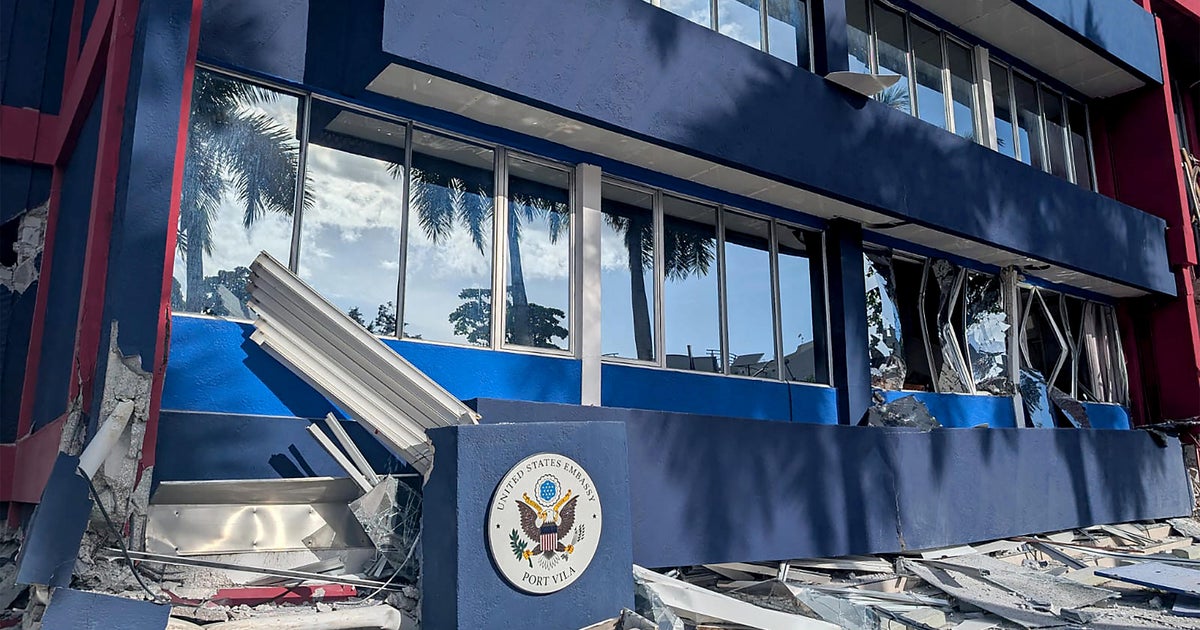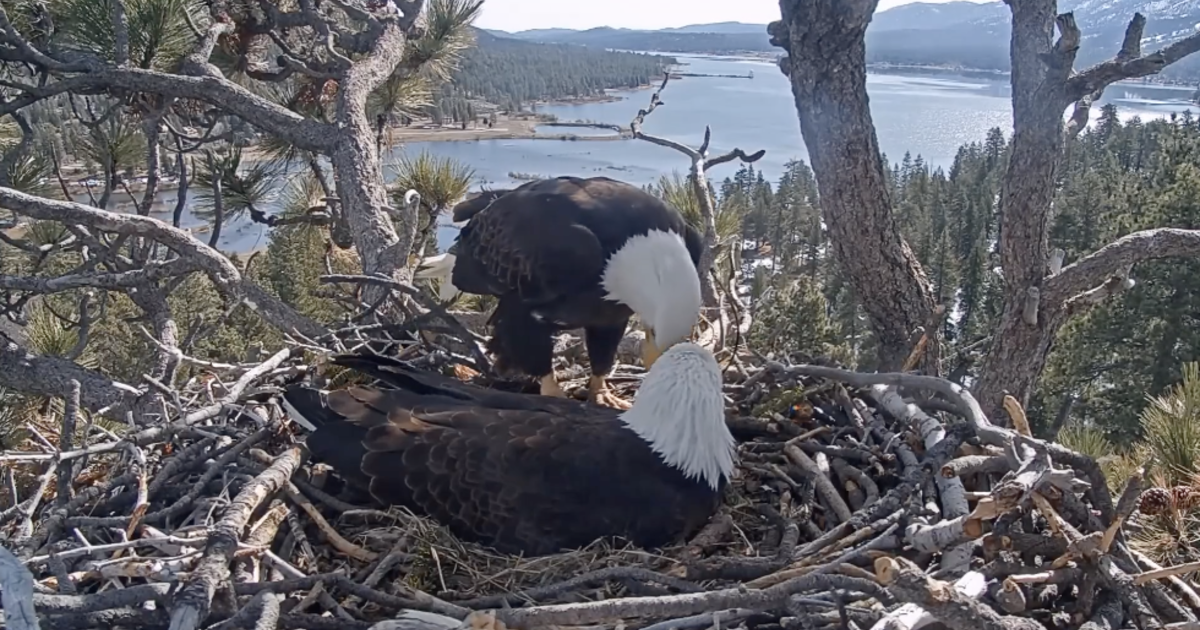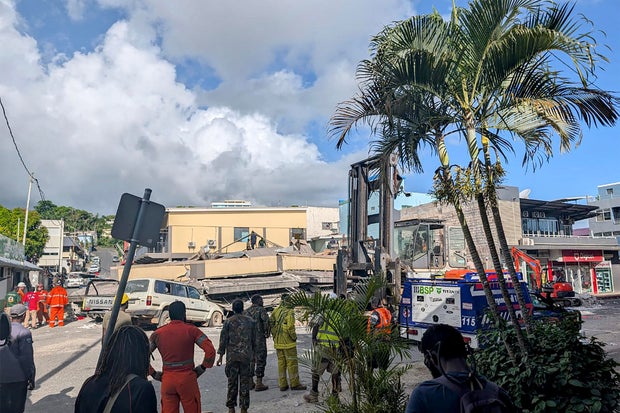CBS News
Washington state man accused of eagle “killing spree” to sell feathers and body parts on black market

A Washington state man accused of helping kill thousands of birds is expected to plead guilty Wednesday to shooting eagles on an American Indian reservation in Montana and selling their feathers and body parts on the black market.
The prosecution over golden and bald eagles killed on the Flathead Indian Reservation underscores the persistence of a thriving illegal trade in eagle feathers despite a law enforcement crackdown in the 2010s that netted dozens of criminal indictments across the U.S. West and Midwest.
A grand jury indictment last December quotes defendant Travis John Branson saying in a January 2021 text that he was going on a “killing spree” to obtain eagle tails. Branson and a second defendant, Simon Paul, killed approximately 3,600 birds, including eagles on the Flathead reservation and elsewhere, according to the indictment. Federal authorities have not disclosed how all the birds were killed, nor where else the killings happened.
/ AP
Branson, of Cusick, Washington, sold an unidentified purchaser two sets of golden eagle tail feathers – highly prized among many Native American tribes – for $650 in March 2021, according to court documents.
Less than two weeks later, law enforcement stopped Branson on the reservation and found in his vehicle the feet and feathers of a golden eagle he had shot near Polson, Montana, according to filings that included a photo of the bird’s severed feet with their massive talons. The bird’s carcass had been “cleaned” by the second defendant, Simon Paul, and was found in a nearby field, prosecutors wrote.
Multiple phones seized by authorities during the stop yielded photos and text messages that described “the shooting, killing and ultimate selling of bald and golden eagles throughout the United States,” prosecutors said.
Feathers and other parts of eagles are illegal to sell but widely used by Native Americans in ceremonies and during powwows.
Branson, who remained free following the indictment, reached a deal with prosecutors last month to plead guilty to four counts: conspiracy, wildlife trafficking and two counts of trafficking in federally protected bald and golden eagles.
Branson could not be reached for comment before Wednesday’s hearing in Missoula. His public defender declined comment while the case is pending.
Paul of St. Ignatius, Montana, remains at large. A federal judge issued an arrest warrant for Paul when he did not show up for an initial court hearing in December.
The indictment described Branson and Paul trafficking golden and bald eagles or their parts on at least 11 occasions between December 2020 and the stop of Branson by law enforcement on March 13, 2021.
But court filings suggest the illegal activity went on much longer. They outline a conspiracy that began in 2015 and involved other people who killed eagles on the Flathead Reservation but have not been publicly identified.
In a 2016 text message quoted by prosecutors, Branson appeared to acknowledge that shipping eagles internationally was illegal, adding, “I just get em for 99 cents…price of a bullet.”
In another text exchange, Branson was negotiating an eagle feather sale when he allegedly wrote, “I don’t get em for free though….out hear (sic) committing felonies,” according to the court filings.
/ AP
The indictment also alleges that on March 13, 2021, Branson and Paul returned to a previously killed deer to lure eagles and that Branson shot a golden eagle. Paul cleaned the golden eagle and both men placed various golden eagle parts in a vehicle for transport, prosecutors said.
Branson faces up to five years in prison and a $250,000 at sentencing on most serious charge, conspiracy. Under the plea deal, lawyers for the U.S. Attorney’s Office in Montana said they would seek to dismiss additional trafficking charges and would recommend a sentencing guideline reduction that could lessen the severity of Branson’s punishment.
The criminal case comes almost a decade after a multi-state U.S. Fish and Wildlife Service trafficking investigation dubbed “Operation Dakota Flyer” led to charges against 35 defendants and the recovery of more than 150 eagles, 100 hawks and owls and 20 species of other protected birds that were seized or bought by authorities in undercover purchases, according to federal officials.
Federally recognized tribes can apply for permits with the U.S. Fish and Wildlife Service to take a bald or golden eagle for religious purposes, and enrolled tribal members can apply for feathers and other bird parts from the National Eagle Repository in Colorado and non-government repositories in Oklahoma and Phoenix. There’s a yearslong backlog of requests at the National Repository and researchers say the high demand is fueling the black market for eagle parts.
The Bald and Golden Eagle Protection Act was enacted in 1940 to protect the bald eagle. In 1962, Congress extended the Act to protect golden eagles.
Bald eagles were decimated by habitat destruction and degradation in the mid 1900s and in danger of going exctinct, but in recent decades, habitat protection and conservation actions have “helped bald eagles make a remarkable recovery,” the Fish and Wildlife Service says. There are more than 316,000 bald eagles in the lower 48 states, based on data from 2018 to 2019.
They can live up to about 30 years in the wild.
CBS News
Head of Russia’s nuclear defense forces killed in Moscow blast triggered by device hidden in scooter, officials say

Moscow — The head of Russia’s Nuclear, Biological, and Chemical Defense Forces, Lt. General Igor Kirillov, was killed along with his deputy early Tuesday in an explosion in Moscow, Russia’s Investigative Committee said.
An explosive device hidden in an electronic scooter went off outside a residential building as the two men left the structure, Agence France-Presse cites investigators as saying.
ALEXANDER NEMENOV / AFP via Getty Images
“Investigators, forensic experts and operational services are working at the scene,” committee spokesperson Svetlana Petrenko said in a statement. “Investigative and search activities are being carried out to establish all the circumstances around this crime.”
ALEXANDER NEMENOV / AFP via Getty Images
The committee carries out responsible major investigations in Russia.
Kirillov was sentenced in absentia by a Ukrainian court on Dec. 16 for the use of banned chemical weapons in Ukraine during Russia’s military operation in Ukraine that started in Feb. 2022.
AFPTV / AFP via Getty Images
Ukraine’s Security Service, the SBU, said it had recorded more than 4,800 uses of chemical weapons on the battlefield since February 2022, particularly K-1 combat grenades.
During the almost 3-year operation, Russia has made small but steady territorial gains to the nearly one-fifth of Ukraine it already controls.
Kirillov had been in his post since 2017, AFP notes.
CBS News
Earthquake rocks Pacific island nation of Vanuatu, deaths feared, U.S. embassy damaged

A powerful earthquake hit the Pacific island nation of Vanuatu Tuesday, smashing buildings in the capital, Port Vila, including one housing the embassies of the U.S. and other nations. A witness told Agence France-Presse of bodies seen in the city.
Dan McGarry, a journalist with the Organized Crime and Corruption Reporting Project based in Vanuatu, told the Reuters news agency in an interview that police said at least one person had been killed and injured people had been taken to hospital.
“It was the most violent earthquake I’ve experienced in my 21 years living in Vanuatu and in the Pacific Islands. I’ve seen a lot of large earthquakes, never one like this,” he said.
The 7.3-magnitude quake struck at a depth of 35 miles, off the coast of Efate, Vanuatu’s main island, at 12:47 p.m. local time, according to the U.S. Geological Survey.
The ground floor of a building housing the U.S, French and other embassies had been crushed under higher floors, resident Michael Thompson told AFP by satellite phone after posting images of the destruction on social media.
“That no longer exists. It is just completely flat. The top three floors are still holding but they have dropped,” Thompson said.
“If there was anyone in there at the time, then they’re gone.”
Thompson said the ground floor housed the U.S. embassy, but that couldn’t be immediately confirmed.
A photo showed significant damage to the building:
STR / AFP via Getty Images
The United States has closed the embassy until further notice, citing “considerable damage” to the mission, the U.S. embassy in Papua New Guinea said in a message on social media. “Our thoughts are with everyone affected by this earthquake,” the embassy said.
The New Zealand High Commission, housed in the same building, suffered “significant damage,” a statement from Foreign Minister Winston Peters’ office said, adding that, “New Zealand is deeply concerned about the significant earthquake in Vanuatu, and the damage it has caused.”
Thompson, who runs a zipline adventure business in Vanuatu, said, “There’s people in the buildings in town. There were bodies there when we walked past.”
A landslide on one road had covered a bus, he said, “so there’s obviously some deaths there.”
The quake also collapsed at least two bridges, and most mobile networks were cut off, Thompson said.
“They’re just cracking on with a rescue operation. The support we need from overseas is medical evacuation and skilled rescue, (the) kind(s) of people that can operate in earthquakes,” he said.
STR / AFP via Getty Images
Video footage posted by Thompson and verified by AFP showed uniformed rescuers and emergency vehicles working on a building where an external roof had collapsed onto a number of parked cars and trucks.
The streets of the city were strewn with broken glass and other debris from damaged buildings, the footage showed.
Nibhay Nand, a Sydney-based pharmacist with businesses across the South Pacific, said he had spoken to staff in Port Vila who said most of the store there had been “destroyed” and that other buildings nearby had “collapsed.”
“We are waiting for everyone to get online to know how devastating and traumatic this will be,” Nand told AFP.
A tsunami warning was issued after the quake, with waves of up to three feet forecast for some areas of Vanuatu, but it was soon lifted by the Pacific Tsunami Warning Center.
Earthquakes are common in Vanuatu, a low-lying archipelago of 320,000 people that straddles the seismic Ring of Fire, an arc of intense tectonic activity that stretches through Southeast Asia and across the Pacific Basin.
Vanuatu is ranked as one of the countries most susceptible to natural disasters such as earthquakes, storm damage, flooding and tsunamis, according to the annual World Risk Report.
CBS News
12/16: CBS Evening News – CBS News

Watch CBS News
Be the first to know
Get browser notifications for breaking news, live events, and exclusive reporting.













